Country of origin United States | Thrust 2,400 kN | |
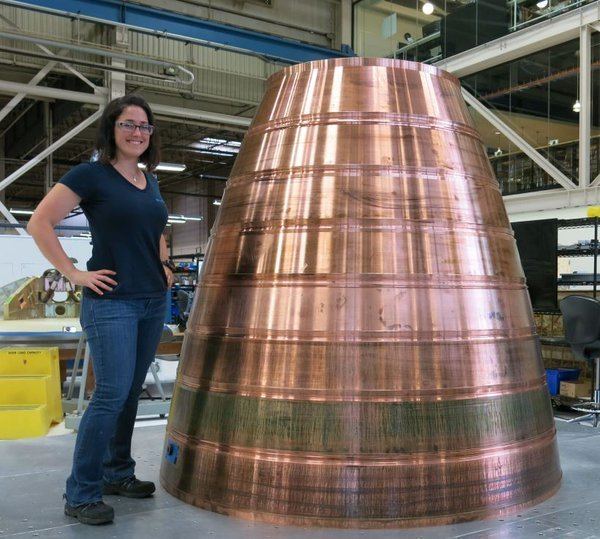 | ||
Cycle single-shaft oxygen-rich staged combustion | ||
Be 4 engine technology test
The Blue Engine 4, or BE-4 is a staged-combustion rocket engine under development by Blue Origin. The BE-4 is being developed with private funding, the engine is "being developed without any government assistance". The engine has been designed to produce 2,400 kilonewtons (550,000 lbf) of thrust. Both first-stage and second-stage versions of the engine are planned. First flight is expected no earlier than 2019.
Contents
- Be 4 engine technology test
- History
- Applications
- Atlas V successor
- XS 1 engine
- New Glenn launch vehicle
- Availability and use
- Technical specifications
- References
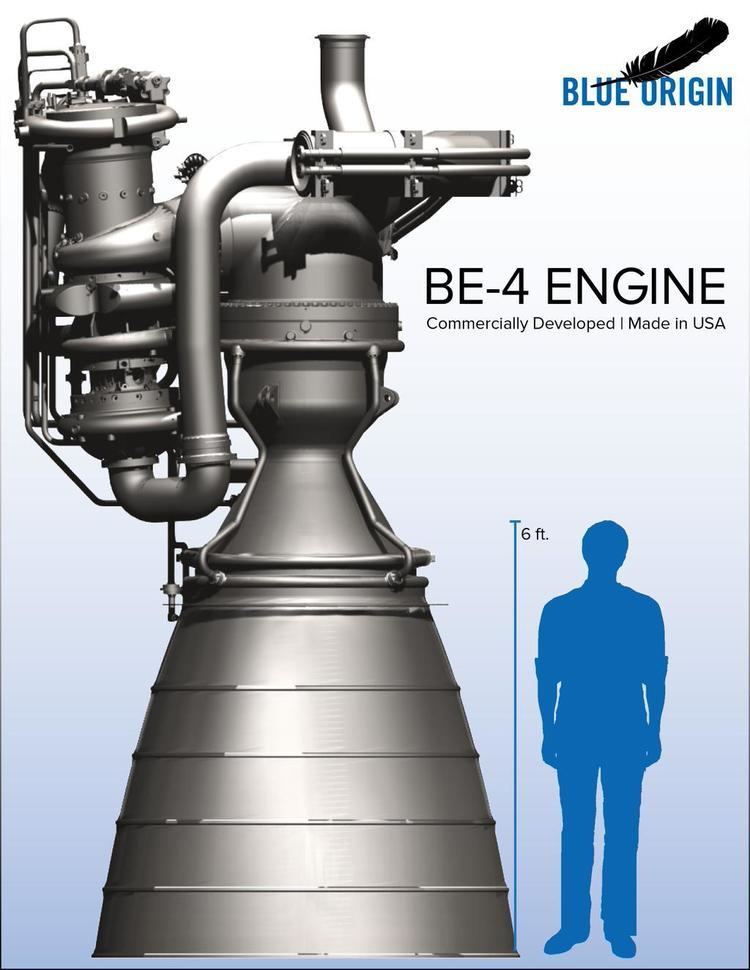
Although it was initially planned to be used exclusively on a Blue Origin proprietary launch vehicle, it is currently planned that the engine will also be used on the United Launch Alliance Vulcan launch vehicle, the successor to the Atlas V launch vehicle, where it is the leading candidate engine to replace the Russian-made RD-180 engine currently used by ULA.
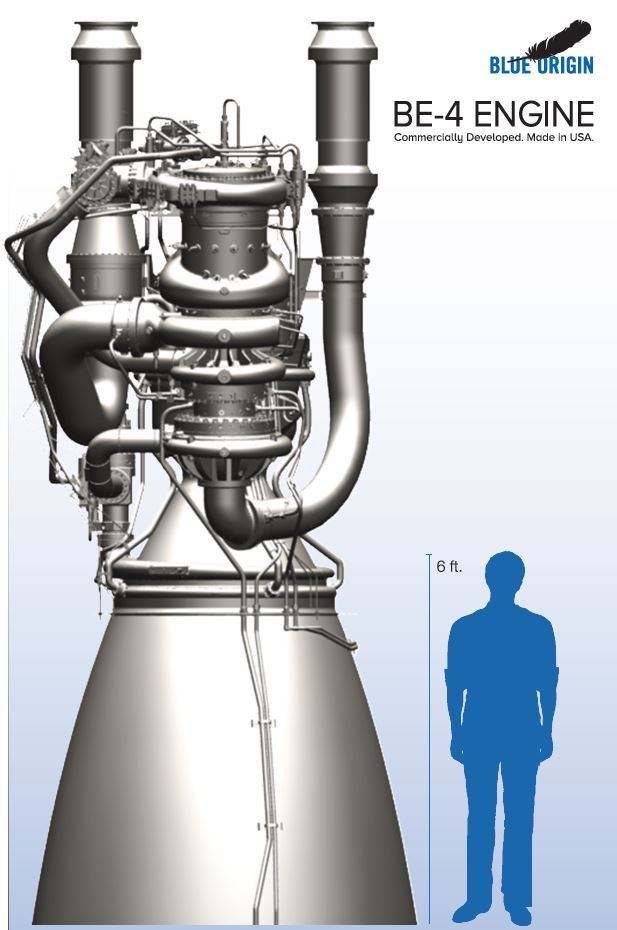
History
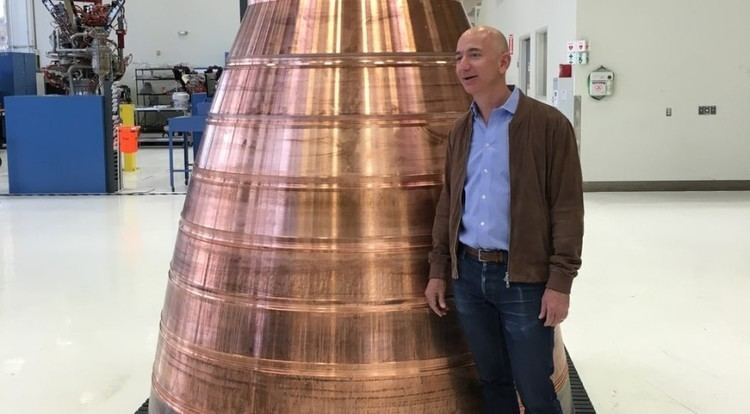
Blue Origin began work on the BE-4 in 2011. The new engine marks a change for Blue Origin in that this is their first engine that will combust liquid oxygen and liquid methane propellants. Blue Origin did not announce the new engine to the public until September 2014. In September 2014—in a choice labeled "a stunner" by Space News—the large US launch vehicle manufacturer and launch service provider United Launch Alliance selected the Blue BE-4 as the main engine for a new primary launch vehicle.
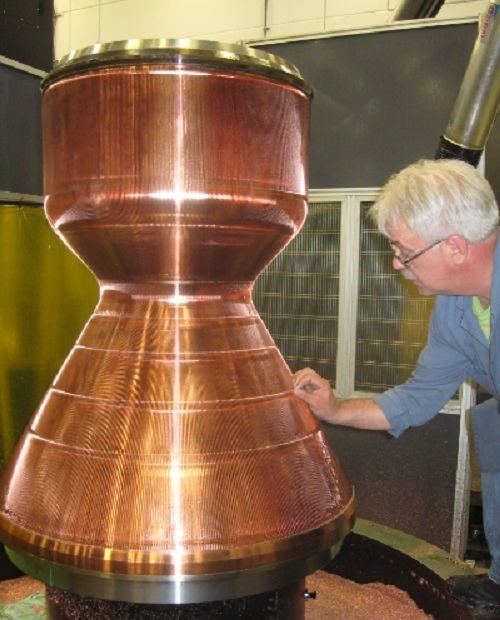
As of April 2015, the engine development work was being carried out in two parallel programs. One program is testing full-scale versions of the BE-4 powerpack, the set of valves and turbopumps that provide the proper fuel/oxidizer mix to the injectors and combustion chamber. The second program is testing subscale versions of the engine's injectors. Also in early 2015, the company indicated it is planning to begin full-scale engine testing in late 2016, and that they expected to complete development of the engine in 2017.
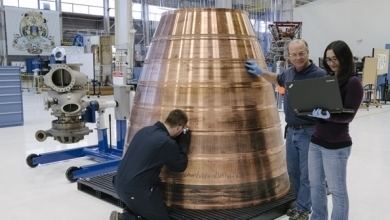
As of September 2015, Blue had completed more than 100 development tests of several elements of the BE-4, including the preburner and a "regeneratively-cooled thrust chamber using multiple full-scale injector elements". The tests were used to confirm the theoretical model predictions of "injector performance, heat transfer, and combustion stability", and data collected is being used to refine the engine design. There was an explosion on the test stand during 2015 during powerpack testing. Blue built two larger and redundant test stands to follow, capable of testing the full 500,000 lbf (2,200,000 N) thrust of the BE-4.
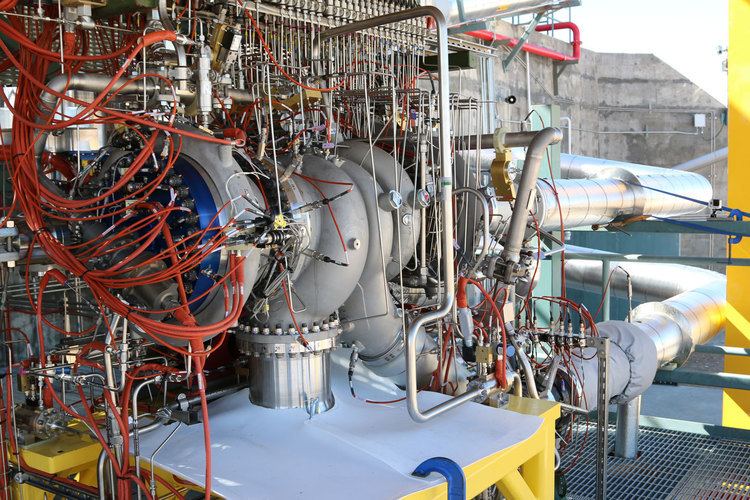
In January 2016, Blue announced that they intended to begin testing full engines of the BE-4 on ground test stands prior to the end of 2016. Following a factory tour in March 2016, journalist Eric Berger noted that a large part of "Blue Origin’s factory has been given over to development of the Blue Engine-4".
Applications
As of 2016, the BE-4 is slated to be used on two launch vehicles that are currently in development, while a modified derivative of the BE-4 is being considered for an experimental spaceplane in a project funded by the US military.
Atlas V successor
In late 2014, Blue Origin signed an agreement with United Launch Alliance to co-develop the BE-4 engine and to commit to use the new engine on the Vulcan launch vehicle, a successor to the Atlas V, which would replace the single RD-180 Russian-made engine. Vulcan will use two of the 2,400 kN (550,000 lbf) BE-4 engines on each first stage. The engine development program began in 2011.
The ULA partnership announcement came after months of uncertainty about the future of the Russian RD-180 engine that has been used in the ULA Atlas V rocket for over a decade. Geopolitical concerns had come about that created serious concerns about the reliability and consistency of the supply chain for the procurement of the Russian engine. ULA expects the first flight of the new launch vehicle no earlier than 2019.
Since early 2015, the BE-4 has been in competition with the AR1 engine for the Atlas V RD-180 replacement program. Unlike BE-4's methane engine, the AR1, like the RD-180, is kerosene-fueled. In February 2016, the US Air Force issued a contract that provides partial development funding of up to US$202 million to ULA in order to support use of the Blue BE-4 engine on the ULA Vulcan launch vehicle.
Initially, only US$40.8 million will be disbursed by the government with US$40.8 million additional to be spent by a ULA subsidiary on Vulcan BE-4 development. Up to US$536 million is being directly provided to Aerojet Rocketdyne to advance development of the AR-1 engine, an alternative for powering the Vulcan rocket.
Bezos has noted, however, that the Vulcan launch vehicle is being designed around the BE-4 engine; ULA switching to the AR1 would require significant delays and money on the part of ULA. This point has also been made by ULA executives, who have also clarified that the BE-4 is likely to cost 40% less than the AR1, as well as have Bezos capacity to "make split-second investment decisions on behalf of BE-4, and has already demonstrated his determination to see it through. [whereas the] AR1, in contrast, depends mainly on U.S. government backing, meaning Aerojet Rocketdyne has many phone numbers to dial to win support".
XS-1 engine
Boeing secured a contract to design and build the DARPA XS-1 reusable spaceplane in 2014. The company, in partnership with Blue Origin, is expected to consider a modified derivative of the BE-4 engine for the craft. The XS-1 would utilize the engine to provide the considerable thrust necessary to accelerate to hypersonic speed at the edge of the Earth's atmosphere, thereby enabling its payload to reach orbit.
New Glenn launch vehicle
The engine is to be used on the Blue Origin large orbital launch vehicle New Glenn, a 7.0-meter (23 ft)-diameter two-stage orbital launch vehicle with an optional third stage and a reusable first stage. The first flight and orbital test is planned for no earlier than 2020.
The first stage will be powered by seven BE-4 engines and will be reusable, landing vertically. The second stage of New Glenn will share the same diameter and use a single BE-4 vacuum-optimized engine. The second stage will be expendable.
Availability and use
Blue Origin has indicated that they intend to make the engine commercially available, once development is complete, to companies beyond ULA, and also plans to utilize the engine in Blue Origin's own new orbital launch vehicle. As of March 2016, Orbital ATK is also evaluating Blue engines for its launch vehicles. One of the most innovative features of the BE-4 is the use of Liquified Natural Gas rather than other rocket fuels like Kerosene, this new approach is called autogenous pressurization. This is beneficial because it eliminates the need for costly and complex pressurization systems, like helium. Furthermore, LNG leaves no soot byproducts as kerosene does.
Although all early BE-4 components and full engines to support the test program were built at Blue's headquarters location in Kent, Washington, the location for production of the BE-4 had not yet been determined by 2016. Testing and support of the reusable BE-4s will occur at the company's orbital launch facility at Exploration Park in Florida, where Blue Origin is investing more than US$200 million in facilities and improvements.
Technical specifications
The BE-4 is designed for long life and high reliability, partially by aiming the engine to be a "medium-performing version of a high-performance architecture".
